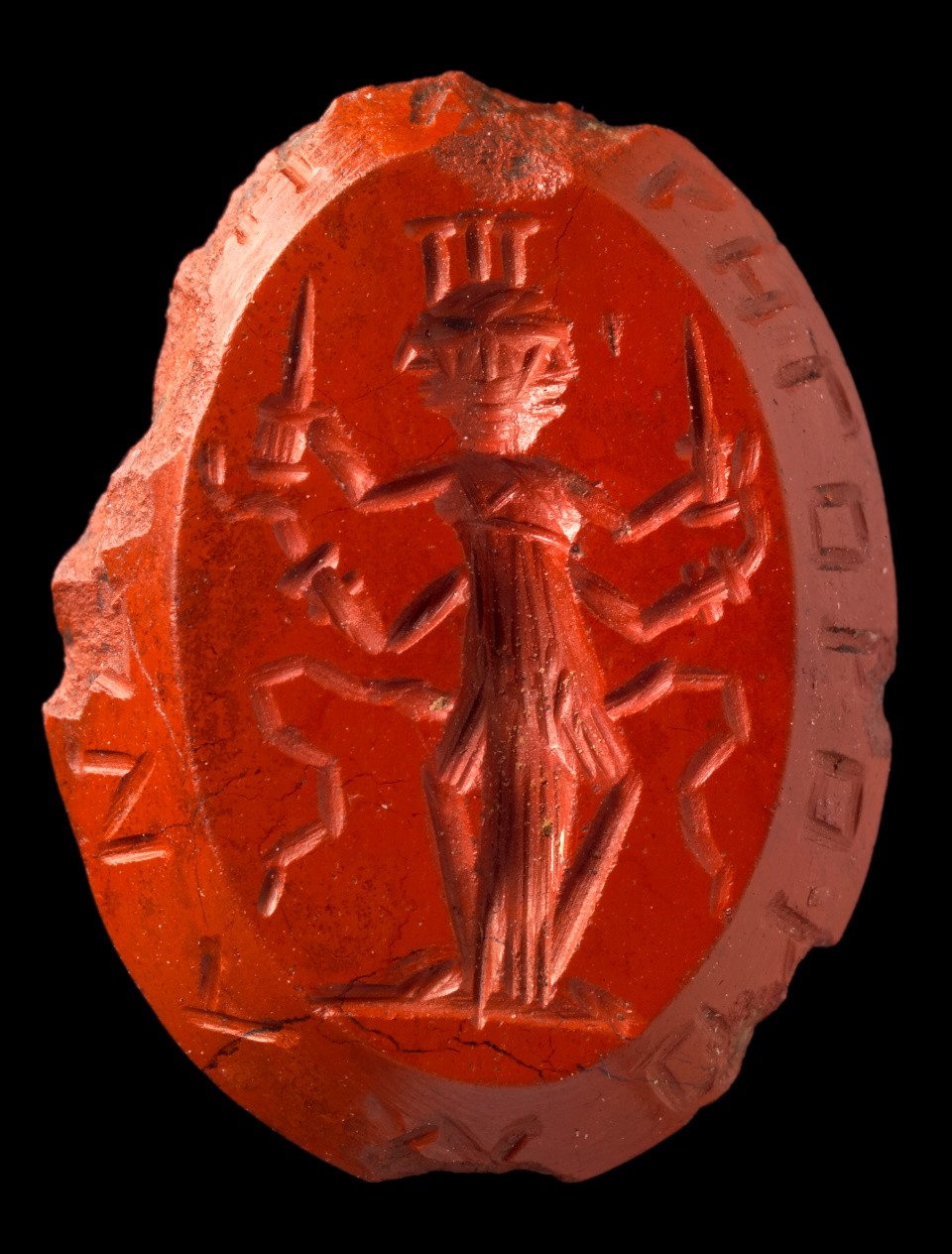Hecate is considered the divine mediator between the supernatural and the subterranean. Since the 5th century BC, she has been equated with the goddess Artemis, to whom she is also related by family, according to Hesiod (theog. 409-411), and with Persephone as well as with Ereschkigal, the Sumerian mistress of the underworld, or the moon goddess Selene. In this trinity, which is also taken into account in the iconography, the parts referring to Artemis and Selene stand for the above, Persephone for the below.
Because of her affinity with the lower, the realm of the dead, Hecate was attributed demonic traits from this time onwards, which consolidated her role as the "mistress of ghosts" and later gave her negative character traits herself.
As a protective goddess, she was worshipped in places where evil spirits and demons were suspected, e.g. entrances to houses or crossroads. Here the statuettes of the goddess with three heads and three bodies, known since classical times, were erected, expressing the trinity of her being (Hekateia).
Hecate, who is important for magical gems, is usually also depicted in this object genre in this triform type.
A popular motif attributed with evil-preventing qualities was the head of Medusa, the only mortal among the three Gorgon sisters. In combination with the three-figure Hecate and the Gorgoneion, the chthonic and ghostly side of the moon is expressed. (AVS)
Former collection August Kestner, Rome
en









